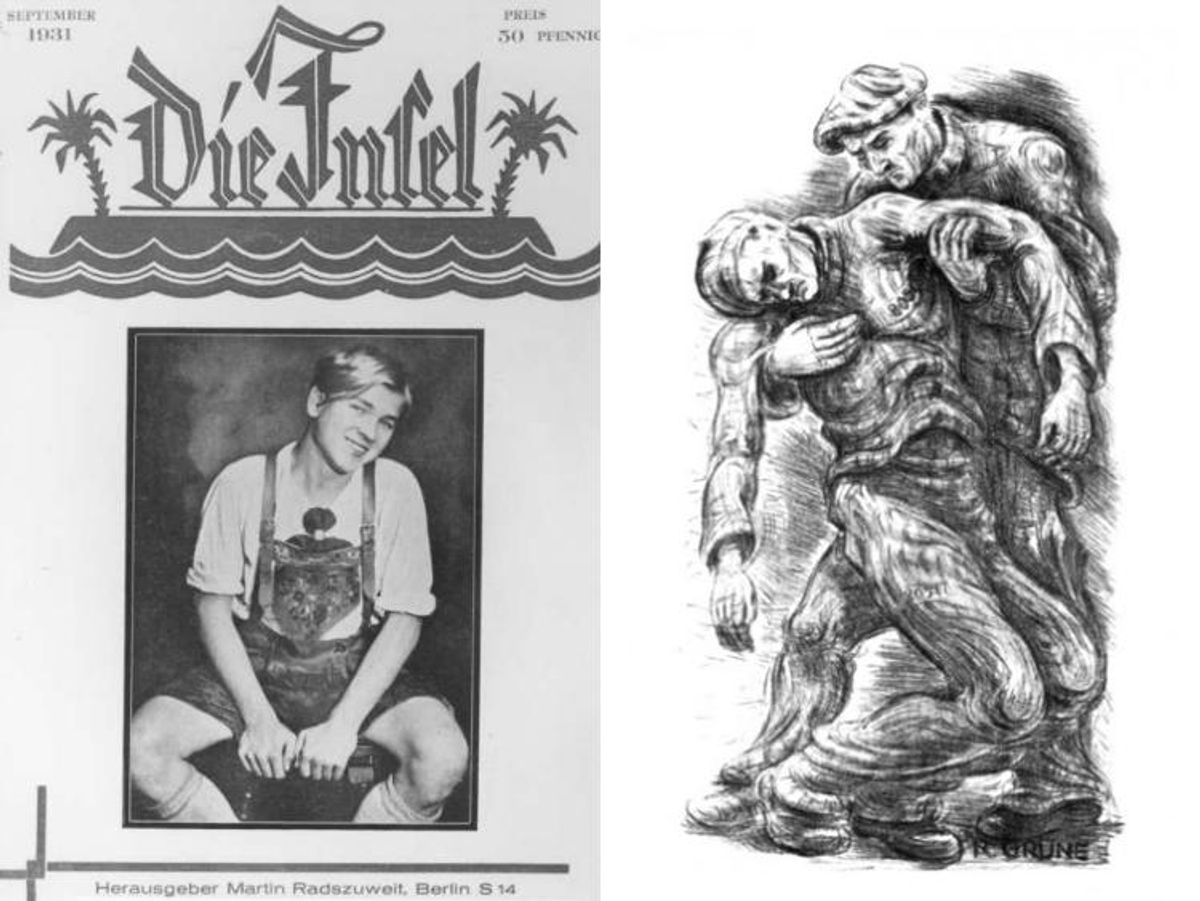Photos courtesy of United States Holocaust Memorial Museum
A traveling exhibition produced by the United States Holocaust Memorial Museum, "Nazi Persecution of Homosexuals 1933-1945," will open at the Museum of Jewish Heritage on May 29, in New York City.
The show tells the often unknown story of Nazi persecution of homosexuals during World War II: Hitler's genocide resulted in the death of 6 million Jews and millions of other people, with an estimated 5,000-15,000 sent to concentration camps because of their sexuality--the vast majority of them being gay men.
The story of these victims, commonly known as the Pink Triangles, has begun attracting attention relatively recently. Despite noted works like the play Bent, which was adapted into a film starring Clive Owen in 1997, and memoirs by former camp prisoners Gad Beck and Pierre Seel, their stories have largely failed to penetrate mainstream Holocaust narratives. And while there are now a number of memorials to gay people killed during the Holocaust --in places like Amsterdam, Tel Aviv, Berlin, and Sydney-- this exhibition aims to go further.
"The exhibition explores why homosexual behavior was identified as a danger to Nazi society and how the Nazi regime attempted to eliminate it," says exhibition curator Edward Phillips. "The Nazis believed it was possible to 'cure' homosexual behavior through labor and 're-education.' Their efforts to eradicate homosexuality left gay men subject to imprisonment, castration, institutionalization, and deportation to concentration camps."
Between 1933 and 1945, more than 100,000 gay men were arrested for violating Nazi Germany's ban on homosexuality. The exhibition includes personal accounts, photographs, and detailed information spanning this dark period of LGBTQ history.
Through October 2, 2015. For more information on "Nazi Persecution of Homosexuals 1933-1945" visit the United States Holocaust Memorial Museum website.




















































































Did 'The White Lotus' waste Lisa's acting debut?